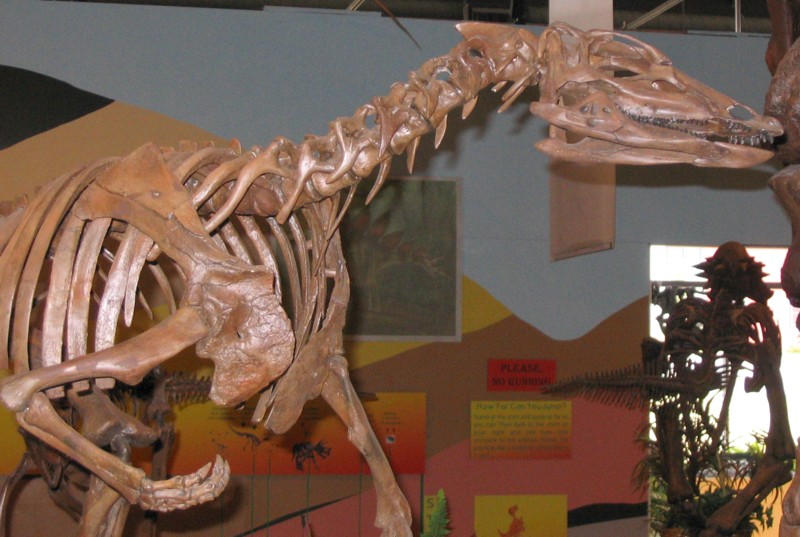Thescelosaurine on:
[Wikipedia]
[Google]
[Amazon]
Thescelosaurinae is a
 Studies disagree about which
Studies disagree about which
subfamily
In biological classification, a subfamily (Latin: ', plural ') is an auxiliary (intermediate) taxonomic rank, next below family but more inclusive than genus. Standard nomenclature rules end subfamily botanical names with "-oideae", and zoologi ...
of thescelosaurid dinosaur
Dinosaurs are a diverse group of reptiles of the clade Dinosauria. They first appeared during the Triassic period, between 243 and 233.23 million years ago (mya), although the exact origin and timing of the evolution of dinosaurs is t ...
s from the Early Cretaceous
The Early Cretaceous ( geochronological name) or the Lower Cretaceous (chronostratigraphic name), is the earlier or lower of the two major divisions of the Cretaceous. It is usually considered to stretch from 145 Ma to 100.5 Ma.
Geology
Pro ...
of Asia
Asia (, ) is one of the world's most notable geographical regions, which is either considered a continent in its own right or a subcontinent of Eurasia, which shares the continental landmass of Afro-Eurasia with Africa. Asia covers an area ...
and the Late Cretaceous
The Late Cretaceous (100.5–66 Ma) is the younger of two epochs into which the Cretaceous Period is divided in the geologic time scale. Rock strata from this epoch form the Upper Cretaceous Series. The Cretaceous is named after ''creta'', the ...
of North America
North America is a continent in the Northern Hemisphere and almost entirely within the Western Hemisphere. It is bordered to the north by the Arctic Ocean, to the east by the Atlantic Ocean, to the southeast by South America and the Car ...
.
Distribution
The distribution of Thescelosaurinae is quite large. They are widespread through United States and Canada where most of theirfossils
A fossil (from Classical Latin , ) is any preserved remains, impression, or trace of any once-living thing from a past geological age. Examples include bones, shells, exoskeletons, stone imprints of animals or microbes, objects preserved in ...
have been found. They also have a small group in North-Eastern China and Mongolia
Mongolia; Mongolian script: , , ; lit. "Mongol Nation" or "State of Mongolia" () is a landlocked country in East Asia, bordered by Russia to the north and China to the south. It covers an area of , with a population of just 3.3 million, ...
.
Genera
 Studies disagree about which
Studies disagree about which genera
Genus ( plural genera ) is a taxonomic rank used in the biological classification of living and fossil organisms as well as viruses. In the hierarchy of biological classification, genus comes above species and below family. In binomial nomenclat ...
are included in the Thescelosaurinae. The group is defined to include ''Parksosaurus
''Parksosaurus'' (meaning " William Parks's lizard") is a genus of neornithischian dinosaur from the early Maastrichtian-age Upper Cretaceous Horseshoe Canyon Formation of Alberta, Canada. It is based on most of a partially articulated skeleton a ...
'' and '' Thescelosaurus'' and a cladistic analysis by C.M. Brown in 2013 concluded that the genera ''Changchunsaurus
''Changchunsaurus'' (meaning " Changchun lizard") is an extinct genus of small herbivorous dinosaur from Early Cretaceous deposits of Gongzhuling, Jilin, China. It is the first named dinosaur genus from Jilin.
Description
''Changchunsaurus'' ...
'', '' Haya'', ''Jeholosaurus
''Jeholosaurus'' is a genus of neornithischian dinosaur from the Early Cretaceous Period. It is thought to have been a herbivorous small ornithopod.
History of discovery
The first two ''Jeholosaurus'' specimens were found in 2000 at Lujiatu ...
'' and possibly ''Koreanosaurus
''Koreanosaurus'' () is a genus of orodromine neornithischian dinosaur. One species has been described, ''Koreanosaurus boseongensis''.
Discovery
In 2003, three specimens of ''Koreanosaurus'' were found in the Late Cretaceous-age Seonso Congl ...
'' are also thescelosaurines.
Classification
All thescelosaurines were originally included in the family Hypsilophodontidae, which is presently considered polyphyletic (unnatural). They are all now considered to be basal neornithischians, though more research is needed to be certain. They are the sister taxa toOrodrominae
Orodrominae is a subfamily of thescelosaurid dinosaurs known from the Cretaceous of North America and Asia.
Distribution
Orodromines were a mostly North American based group with fossils from Canada and United States only. ''Albertadromeus'', as ...
, a group containing '' Albertadromeus'', '' Orodromeus'', ''Oryctodromeus
''Oryctodromeus'' (meaning "digging runner") was a genus of small orodromine thescelosaurid dinosaur. Fossils are known from the Late Cretaceous Blackleaf Formation of southwestern Montana and the Wayan Formation of southeastern Idaho, USA, bot ...
'' and '' Zephyrosaurus''. Their parent taxon is Thescelosauridae along with Orodrominae. Currently, all genera originally included in Jeholosauridae are classified in Thescelosaurinae, possibly as a group inside it. If the group of jeholosaurids is not considered natural than that might mean Jeholosauridae is a synonym of Thescelosaurinae. Recently, a phylogenetic analysis found them outside of Ornithopoda, the group they'd been allied with traditionally.
References
{{Taxonbar, from=Q14816227 Cretaceous dinosaurs Taxa named by Charles Mortram Sternberg Ornithischians